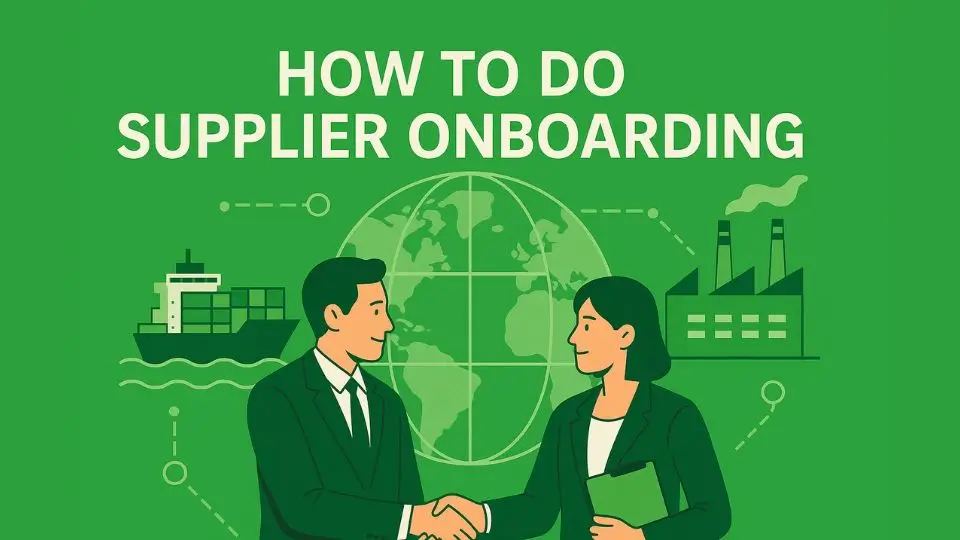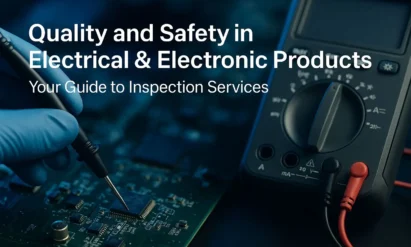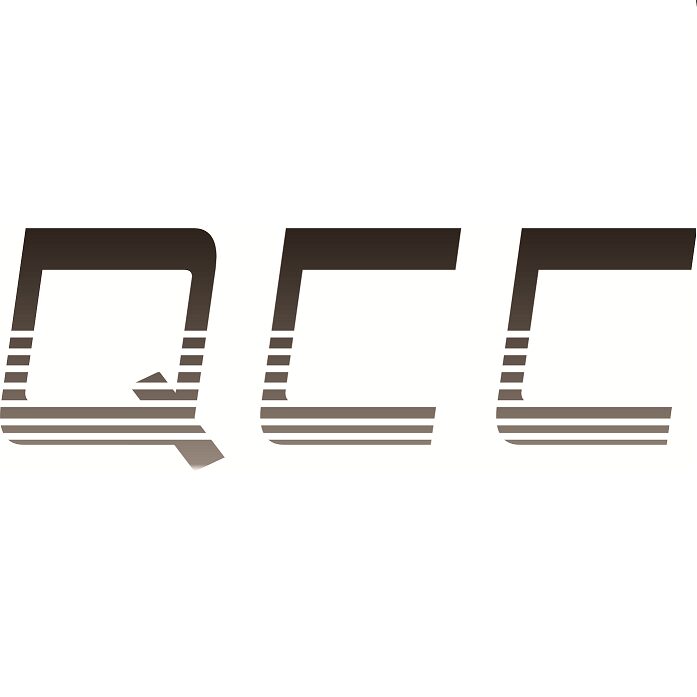How to Do Supplier Onboarding?
Sep 01,2025

In today’s interconnected supply chains, building strong relationships with suppliers is just as important as managing customer expectations.
Supplier onboarding is the process that ensures new vendors are properly vetted, compliant, and integrated into your organisation’s procurement system. When done right, onboarding streamlines operations, reduces risks, and sets the foundation for long-term partnerships.
What Is Supplier Onboarding?
Supplier onboarding is the structured process of collecting, verifying, and approving the necessary information about a new vendor before they begin supplying goods or services.
It goes beyond paperwork—it’s about ensuring suppliers meet compliance standards, align with your company’s values, and can deliver consistent quality.
A well-designed onboarding process balances efficiency with thorough due diligence, protecting organizations from supply disruptions, fraud, or compliance failures.
Steps of the Supplier Onboarding Process
The onboarding process typically follows a series of essential steps. It begins with data collection, where suppliers provide company details, certifications, banking information, and compliance documents.
Next comes verification, which involves background checks, risk assessments, and validation of references or certifications.
Once verified, suppliers are integrated into procurement systems, given access to relevant portals, and briefed on operational policies, codes of conduct, and performance expectations.
The final step involves training or orientation, ensuring that both parties are aligned on workflows, invoicing methods, and communication protocols.
How Do Businesses Automate Supplier Onboarding?
Automation is transforming onboarding by eliminating repetitive manual tasks. Companies increasingly use digital platforms to streamline data collection, compliance checks, and document storage.
For example, automated systems can cross-reference supplier details against global watchlists or instantly flag expired certifications.
Self-service portals empower suppliers to upload and update documents, while integration with ERP systems ensures seamless flow of information. The result is faster onboarding, reduced errors, and better transparency across the procurement lifecycle.
Supplier Qualification & Evaluation
Before a supplier is fully approved, qualification and evaluation are critical. This involves assessing financial stability, production capacity, ethical practices, and quality systems. Procurement teams often use structured scorecards or weighted criteria to compare potential suppliers objectively.
Evaluations may include site visits, audits, or pilot orders to verify performance. By investing in thorough qualification, companies reduce risks of late deliveries, non-compliance, or quality failures later in the relationship.
Supplier Onboarding vs. Supplier Performance Management
While onboarding is the starting point, performance management is the ongoing process of monitoring suppliers once they are active. Onboarding ensures a supplier is ready to work with your company, whereas performance management evaluates how well they perform over time.
Metrics such as on-time delivery, defect rates, sustainability compliance, and responsiveness are used to track ongoing performance. Both processes are complementary: effective onboarding sets the baseline, and performance management ensures continuous improvement.
Benefits of Effective Supplier Onboarding
When organizations invest in strong onboarding, the benefits are substantial. It speeds up time-to-value with new suppliers and reduces administrative overhead. It also ensures compliance with legal, regulatory, and ethical standards, protecting the company from penalties or reputational harm.
Additionally, effective onboarding builds trust, helping suppliers understand expectations from day one and creating a foundation for collaboration. For procurement professionals, it translates to better control, reduced risk, and stronger supply chain resilience.
How to Develop an Effective Supplier Onboarding Process?
Developing a robust onboarding process requires collaboration between procurement, compliance, finance, and IT teams. Companies should standardize requirements, use digital tools for efficiency, and establish clear communication channels with suppliers.
Training procurement teams to follow a consistent approach helps reduce inconsistencies, while giving suppliers guidance documents or FAQs reduces friction during onboarding. Regular reviews of the process also help adapt to changing compliance requirements and evolving supplier markets.
3 Challenges in Supplier Onboarding
Despite its importance, onboarding is not without challenges. One common issue is incomplete or inconsistent supplier data, which slows down verification.
Another is balancing speed with thorough risk assessment—rushing onboarding can expose the company to compliance failures, while excessive red tape frustrates suppliers. A third challenge is managing global suppliers, where language barriers, different legal frameworks, and varying standards add complexity.
Overcoming Challenges in Supplier Onboarding
Overcoming these challenges requires a mix of technology and collaboration. Centralized platforms ensure data accuracy and make updates easy. Risk-based approaches allow procurement teams to tailor onboarding intensity depending on the supplier’s category and risk level.
For global suppliers, multilingual support, localized compliance checks, and regional onboarding hubs help streamline the process. Above all, maintaining open communication with suppliers reduces misunderstandings and fosters stronger partnerships.
Conclusion
Supplier onboarding is not just a formality—it’s the foundation for building resilient, compliant, and collaborative supply chains. Procurement professionals who focus on structured onboarding processes not only protect their organizations but also foster long-term supplier relationships.
In today’s global market, where agility and trust are paramount, effective onboarding is a strategic advantage, not a choice.
--- END ---
Products
Get A Free Quote
Related Blogs
QCC SAMPLE REPORT
For sample reports or custom checklists, please contact us – we're here to assist you.


 November 28,2025
November 28,2025

